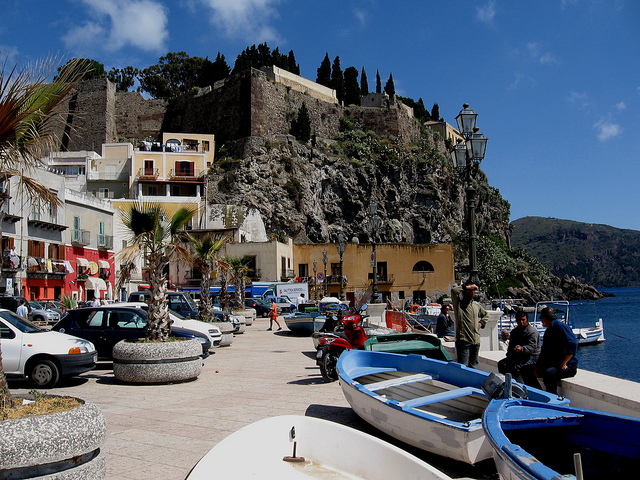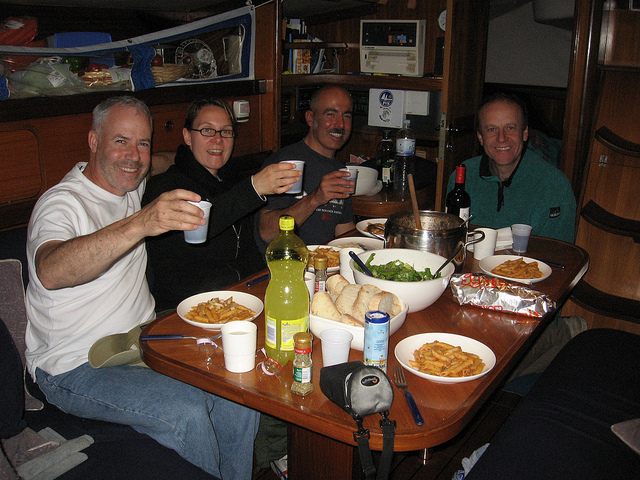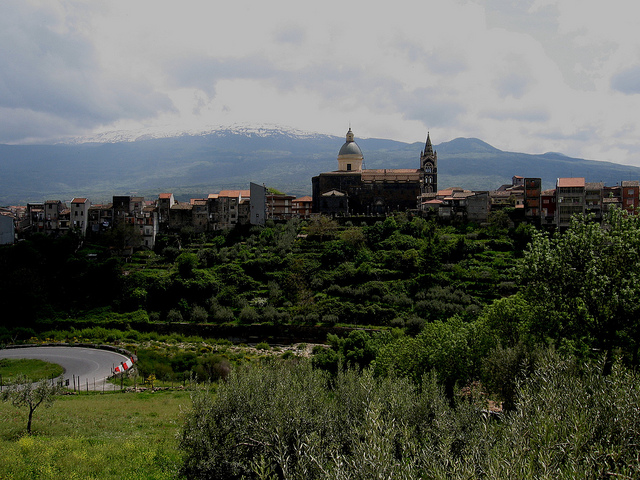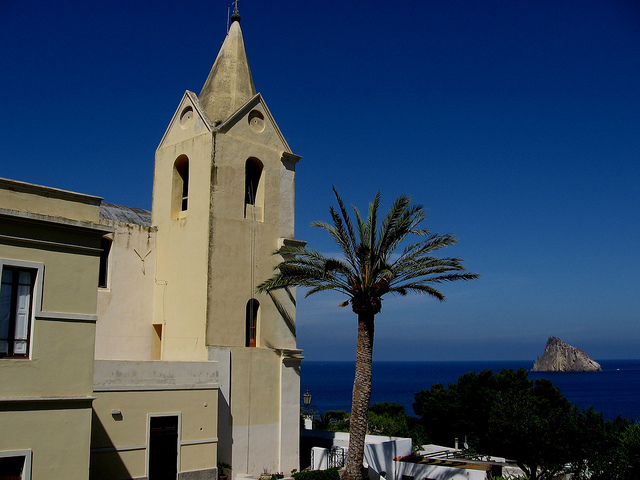I descended the steps from the cathedral and took a left turn which took me into the second harbour of Lipari, Marina Corta, which features a large square with a view up to the fortress and a variety of outdoor cafes with beautiful patios. Today there was a large group of children on bicycles, accompanied by various local police people. It looked like a special bicycling event and drew spectators among the locals and the tourists.

Marina Corta
A small chapel is located at the southern end of the piazza and narrow streets with various retail stores lead up to different parts of town. On my stroll on this sunny day I explored some of these side streets and found tight but neatly kept living quarters, children playing in the street, cats and dogs lazing in the sun, and many older ladies sweeping the pavement in front of their houses.

looking south from Marina Corta
On my back to the ferry boat harbour I connected with Herbert, one of my travel mates, and we walked back to the ship together. Around 2 pm we were ready to leave Lipari and we started chugging out of the harbour and our captain set the sails once we were in the open water.

Cat and madonna
We travelled next to the coast of Lipari and arrived at the next bay which featured a town that hugged the coastline and sprawled up into the hills, and looking further north a huge section of the island consisted of white stone. Francesco, our captain, explained that this stone is pumice, a white porous stone of volcanic origin.

Pumice quarries
We anchored the boat in the bay in front of the pumice quarries, some of which had been shut down several decades ago and continued to exist as industrial ruins. Claudia, Francesco and Lorenzo took a dip in the still rather frigid Mediterranean waters. The temperature could not have been much higher than 18 degrees, and as a real wuss, my policy is to only go swimming if the water temperature is above 28 degrees. So for me it was a no go, but my shipmates enjoyed the brief, yet refreshing dip. We also saw a jellyfish, aptly called “medusa” in Italian. These animals are apparently more common when the water is cooler and are seen less during the summer months.

Looking back at Lipari
Towards 6 pm we reached the next island called Salina, an island that used to be called “didyme” (“twins”) by the ancient Greeks, due to its two major mountains, Fossa delle Felci (altitude 962 m) and Monte dei Porri (860 m). We arrived in the main village of Santa Marina, which features a large pleasure boat harbour. Two other main villages exist on this island: Malfa and Leni, and the total population is about a couple of thousand people.

Church in Santa Marina di Salina
My friend Herbert and I went on a little exploration of the town on foot. Santa Marina is essentially composed of two streets that run parallel to the coastline, the Via Lungomare Giuffré right next to the waterfront and parallel to that the Via Risorgimento, further inland. The town features a larger church on Via Risorgimento, and a smaller chapel on a square right next to the harbour. Activity around the main square is quite lively, with several restaurants, ice cream and street vendors.

Harbour of Santa Marina di Salina



